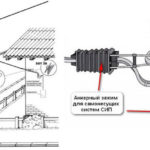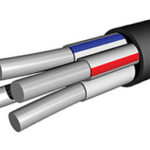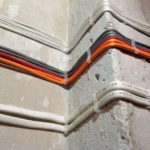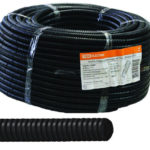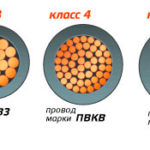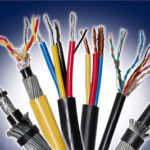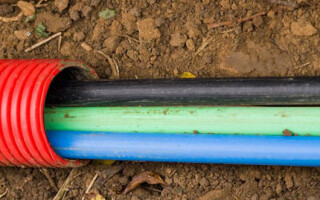Laying a cable in the ground is a laborious process, but this approach guarantees a long service life, because. in this case, the risk of damage to it as a result of the influence of weather factors is lower. In addition, this mounting option reduces the risk of theft.
However, not all types of wires are suitable for laying underground, and there are also some work standards that must be taken into account in order for the cable to function normally and not create conditions for emergencies due to a violation of the integrity of the insulation.
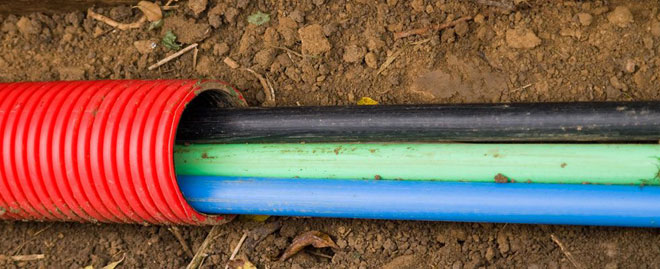
Content
What cable can be used?
In order for the cable in the ground to remain functional for a long time, it must comply with a number of GOST parameters. Only armored cables that have a high-quality waterproofing coating comply with all standards.When selecting a wire, the characteristics of the soil in which it will be located should be taken into account. Under gentle operating conditions, i.e. at a normal level of soil acidity, the following brands of armored cables for laying in the ground can be used:
- AVBbShv;
- VBbShv;
- PvBShv;
- AASHp;
- AAB2l.
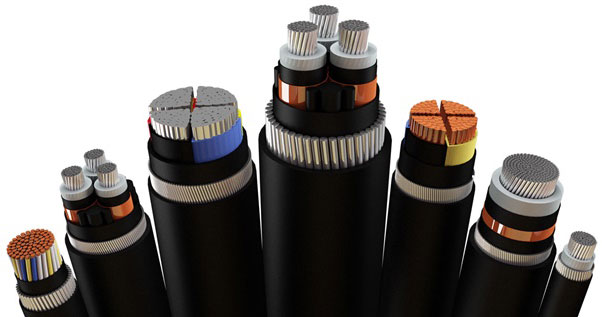
Most often in such conditions, the AVBbShv brand is used. This is a wire with aluminum conductors. It is armored with two galvanized strips and a protective sheath. Another commonly used brand is PvBShv. Such a wire is distinguished by the presence of aluminum conductors covered with steel tapes and polyethylene insulation.
On soils with a high level of chemical activity, incl. in swamps and salt marshes, the following types of cable can be used for laying in the ground:
- AABL;
- AAB2l;
- AASHv;
- AApl.

If it is required to lay a cable in a short section to connect a shed, a summer house or a bathhouse, you can use an unarmored wire covered with a PVC sheath. Such a wire is characterized by high strength and tightness, so it can last a long time. When connecting street lighting, SIP or NYM can be used. However, they are not suitable for arranging high-voltage lines. When laying the cable in the regions of the Far North, brands specially adapted to such aggressive conditions should be used, incl. PvKShp.
List and order of work
There are a number of rules for laying cable on the site. First of all, you need to make a plan of trenches on the site. The paths along which the wires will be laid should be located at a distance of at least 1.5 m from large bushes and trees.If it is not possible to bypass such obstacles with an arc, a metal pipe should be laid in the problem area. You can also use HDPE for laying cables in the ground. It is worth avoiding areas subject to increased loads, incl. car parking spaces, entrance of a sewage truck, etc.
If it is not possible to go around such areas, special protective cases should be used. When planning cable laying in trenches, it must be taken into account that it must be located at least 60 cm from the foundation.
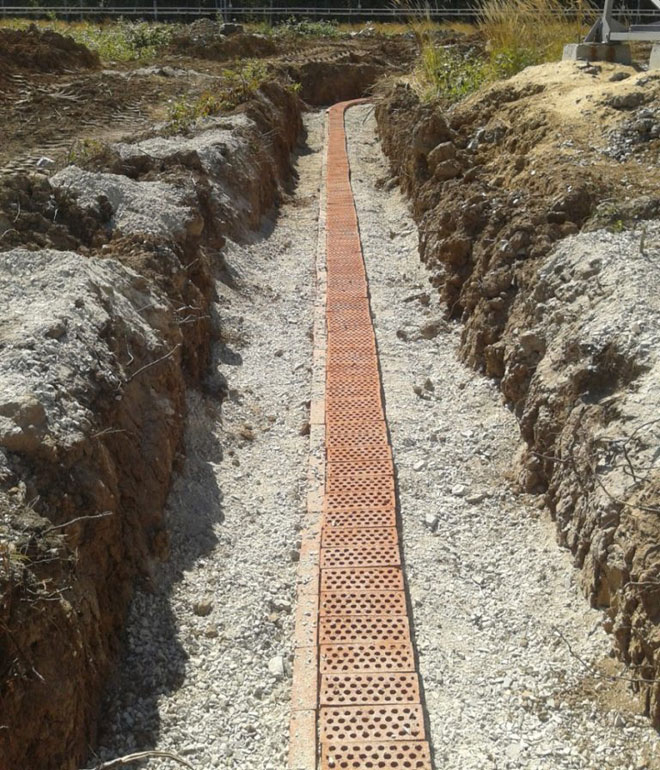
When digging a ditch, the depth of the trench must comply with the regulations. The recommended laying depth is 70 cm. If necessary, the laying depth can be reduced. The width of the trench for laying is about 20-30 cm.
When the question arises of how to lay a cable underground over a large area, more technologically advanced methods of digging a trench can be used, because. the use of a shovel in this case is extremely labor-intensive. In this case, trenchless cabling may be recommended. This method uses a special mechanism that pulls the wire in a protective tube underground without the need for a trench.
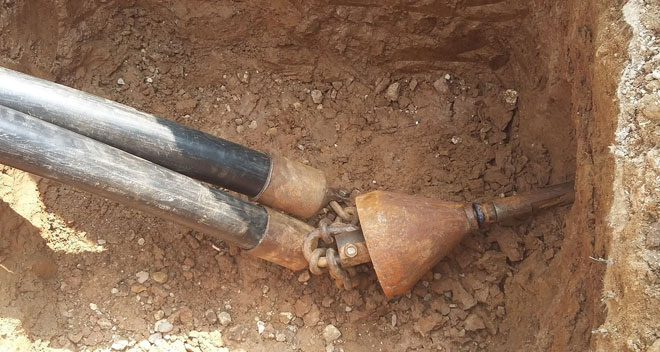
We develop the route
When laying underground cables, it is often not possible to use special equipment and the trench has to be done with a shovel. Roots and stones that come across in the process of digging a trench should be removed immediately. You should not level the bottom, but you need to make sure that there are no sharp drops.
After that, about 10 cm of sifted sand is poured. This layer also needs to be compacted. In areas with increased load, protective elements should be laid immediately, i.e.pieces of pipes that will avoid breaks in the laid wires. The use of cases is required in areas with sewer pipes, etc.
How to lay a track?
Before starting the laying of an electric cable in the ground, it is required to check the integrity of the protective sheath with a megohmmeter. Cables must be in special protective cases. HDPE protective elements cannot replace the laying of a metal pipe when laying a cable under a road, parking lot or other areas with increased load. If several wires are laid in one trench at once, they must be separated from each other with plastic clips. The distance must be at least 5 cm.
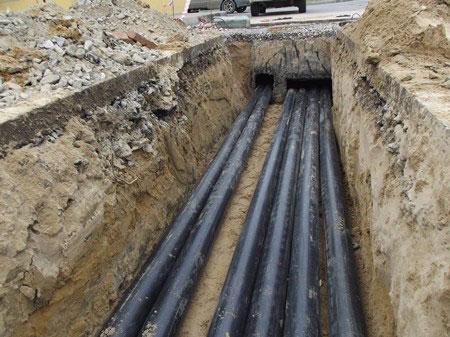
When laying in cases, wires must not be pulled. This will prevent them from being damaged. The following should be taken into account: the depth of the cable laying is such that a lot of moisture can accumulate in the soil in the autumn-spring period. This increases the risk of a short circuit if the integrity of the insulation is violated.
If it is necessary to splice cables, special connectors should be used. It is impossible to use the twisting method and electrical tape for wires that are laid in the ground.
Top cable protection
After the wire is laid in the trench, it must be sprinkled with a 10-centimeter layer of sifted sand. After that, another 15 cm of soil is laid. A plastic signal tape for the cable must be laid on top. It not only reduces the load on the wires, but also protects it from damage during future work. Thus, this protective element will be about 25 cm higher than the cable.
The signal tape differs in the increased durability. The manufacturer puts the inscription “Caution, cable” on it. After that, the ditch is backfilled with previously extruded soil. It is necessary to fill it up so that there is a small slide, because. in the future, it will thicken a little under the influence of precipitation.
How to enter the house?
The process of entering an underground cable into a house or outbuilding has some subtleties. The wire must not be allowed to run under the foundation, since shrinkage of the house will lead to a violation of its integrity. It is advisable, even when pouring the base of the house, to brick mortgages into it, that is, pipes whose diameter is at least 4 times the cross section of high-voltage wires. If the mortgages were not equipped during the construction of the house, you should make a hole in the foundation yourself and place a pipe of the required diameter in it.
After that, a wire is inserted through the hole into the house. Be sure to seal the gasket. To do this, you can fill all the remaining cavities in the mortgage with rags moistened with cement mortar. In addition, for this procedure, you can use mounting foam. This will prevent dirt, water and rodents from getting into the mortgage.
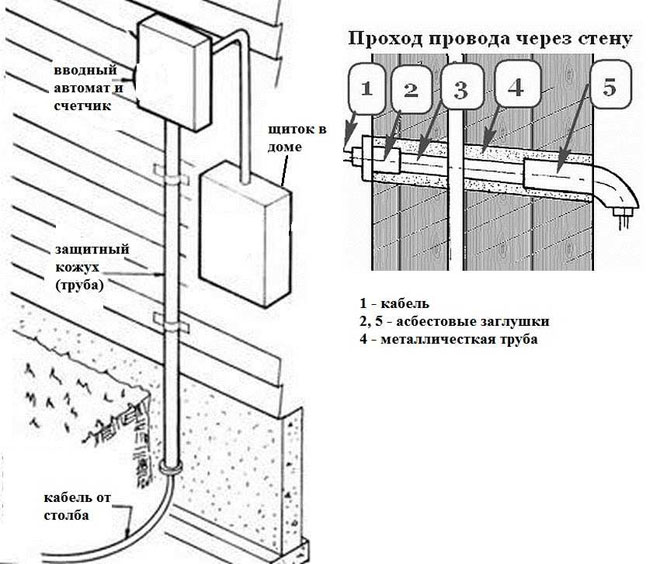
There is another method of introducing cable into the house. To do this, it should be laid along the wall of the house to the place where the introductory cabinet is located. After that, the wire rises along the wall to the desired level. At the required height, a hole is made in the wall into which a metal or plastic pipe is laid. Through it, communications are introduced into the house. Be sure to seal the entrance with foam.
The armored wire must be grounded. This will avoid accidents when the wires that run underground are damaged. To do this, a wire is welded to the armor, which is led to "zero" in the shield.
Similar articles:
